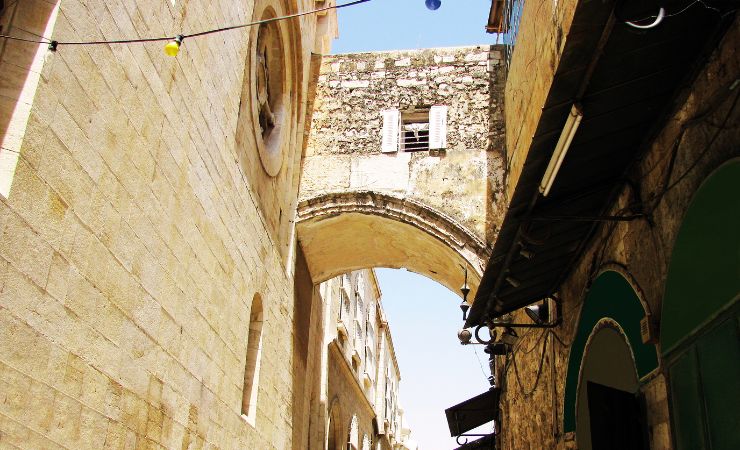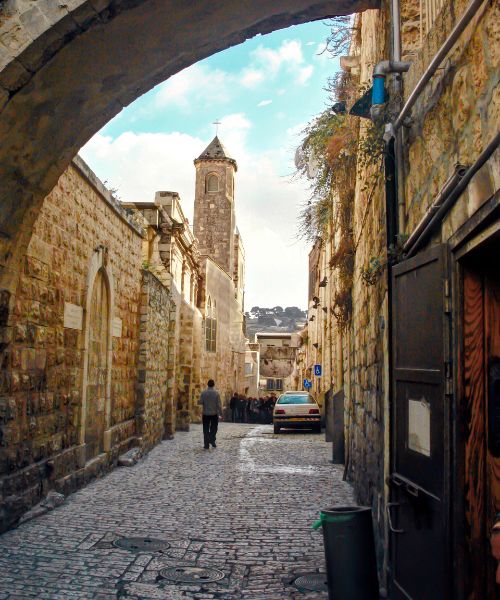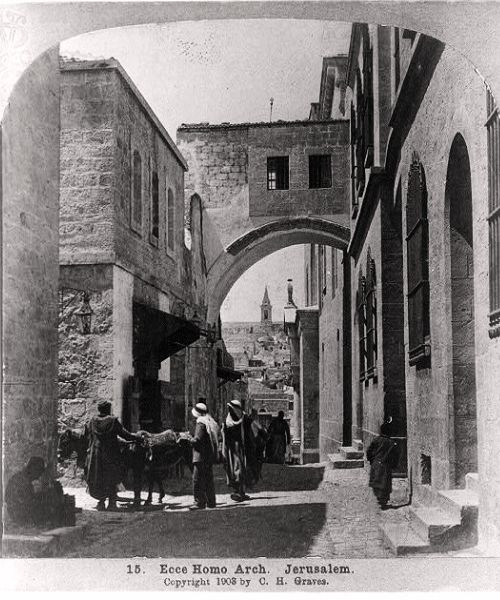Ecce Homo Arch: A Hello from the Roman Period
Introduction
The Ecce Homo Arch is named after Pontius Pilate’s Latin phrase, “Ecce Homo,” which translates to “Behold the Man”. The arch is now incorporated into the Sisters of Zion’s monastery.

Location of the Ecce Homo
The Ecce Homo Arch is situated along the Via Dolorosa in Jerusalem, the path that Jesus is believed to have walked on his way to his crucifixion.
Biblical Context
The term “Ecce Homo” is derived from the New Testament of the Bible, specifically from the Gospel of John. In this biblical account, Pontius Pilate, the Roman governor of Judaea, presents a scourged Jesus Christ, bound and crowned with thorns, to a hostile crowd shortly before his Crucifixion. Pilate utters the words “Ecce Homo” as he reveals the beaten and humiliated Christ to the masses. This poignant scene has been a recurring theme in Christian art, with numerous depictions in paintings and sculptures from the Middle Ages to the present day. Renowned artists such as Hieronymus Bosch, Titian, and Antonio Ciseri have all created works centered around this theme.
So Jesus came out, wearing the crown of thorns and the purple robe. Pilate said to them, ‘Behold the man!
History of the Ecce Homo Arch and the Church
The Ecce Homo Arch has a complex and layered history that spans several centuries. Initially, it was believed to be part of a gateway built by Hadrian in 135 AD as an entrance to the forum of Aelia Capitolina, the Roman city built on the ruins of Jerusalem.
The Sisters of Zion, a Catholic congregation, acquired the site in the 19th century. They discovered the Lithostrotos, or the pavement, where Pilate is said to have presented Jesus to the crowd, uttering the words “Ecce Homo.” The Sisters built the Ecce Homo Convent and the Basilica of Ecce Homo on this site, incorporating the arch into the structure of the buildings.
The Basilica of Ecce Homo, built in the Byzantine architectural style, is a significant part of the Via Dolorosa pilgrimage route. It houses the Ecce Homo Arch and the Lithostrotos, making it a focal point for Christian pilgrims visiting Jerusalem.



Archaeological Insights
The Ecce Homo Arch, also known as Hadrian’s Arch, was an impressive triple-arched Roman gateway. It was traditionally believed to be the location of Pontius Pilate’s Ecce Homo speech, as reported in the Bible. The arch was built in the 2nd century CE during the time of Emperor Hadrian, serving as the entrance gate leading into the Roman Forum (the public square) of Aelia Capitolina.
The triumphal arch was part of a larger complex of buildings in the area. Hadrian installed a vaulted ceiling over the pool to allow the construction of his forum plaza. Today known as the Lithostrotos (gabbatha), the remains of this plaza can still be seen beneath the Convent of Ecce Homo. The reconstruction shows the Hadrian’s triumphal arch (Ecce Homo Arch) and the Lithostrotos which was built over the area where the Struthion Pool was located.
Today, the original arch built by Hadrian remains in ruins. Only the central span and the northern arch remain partially standing. The northernmost small arch integrated into the Basilica of Ecce Homo, originally it would have allowed access into the forum of Hadrian. The central span of the arch continues through the wall of the convent chapel, where the smaller northern arch now frames the tabernacle, under a Byzantine cross on a gilded mosaic backdrop.
The integration of the arch into the Sisters of Zion’s monastery is a testament to the historical and religious significance of the site.
Nearby Sites
-
St. Anne’s Church: Located at the start of the Via Dolorosa, St. Anne’s Church is a well-preserved example of Crusader architecture. It’s traditionally believed to be the birthplace of the Virgin Mary.
-
The Pool of Bethesda: Mentioned in the Gospel of John, the Pool of Bethesda is where Jesus is said to have performed the miracle of healing a paralytic.
- The Church of Flagellation: This Roman Catholic church in Jerusalem commemorates the spot where Jesus Christ was flogged by Roman soldiers before his crucifixion. Built by Antonio Barluzzi, it has beautiful stained glass windows and the courtyard’s symbolic mosaic floor.
- The Lion’s Gate: Also known as St. Stephen’s Gate or Sheep Gate, the Lion’s Gate is one of the seven open gates in Jerusalem’s Old City walls. It’s named after the pair of lion symbols carved into the wall, and it’s the starting point of the Via Dolorosa, the path that Jesus is believed to have walked on his way to crucifixion.



